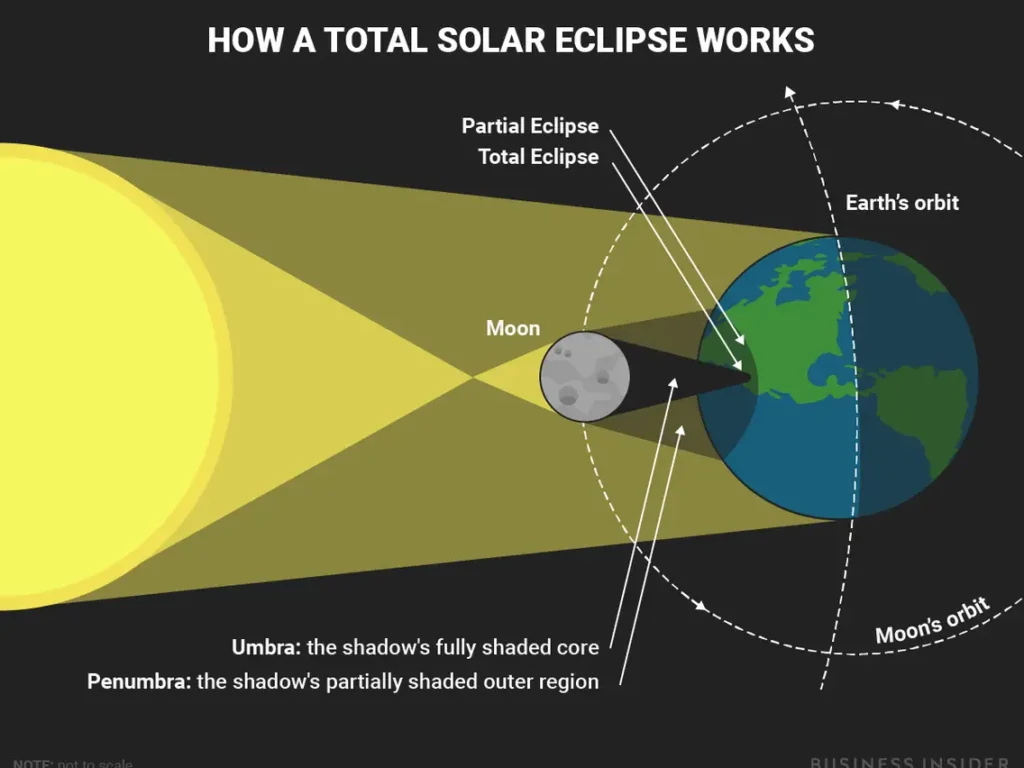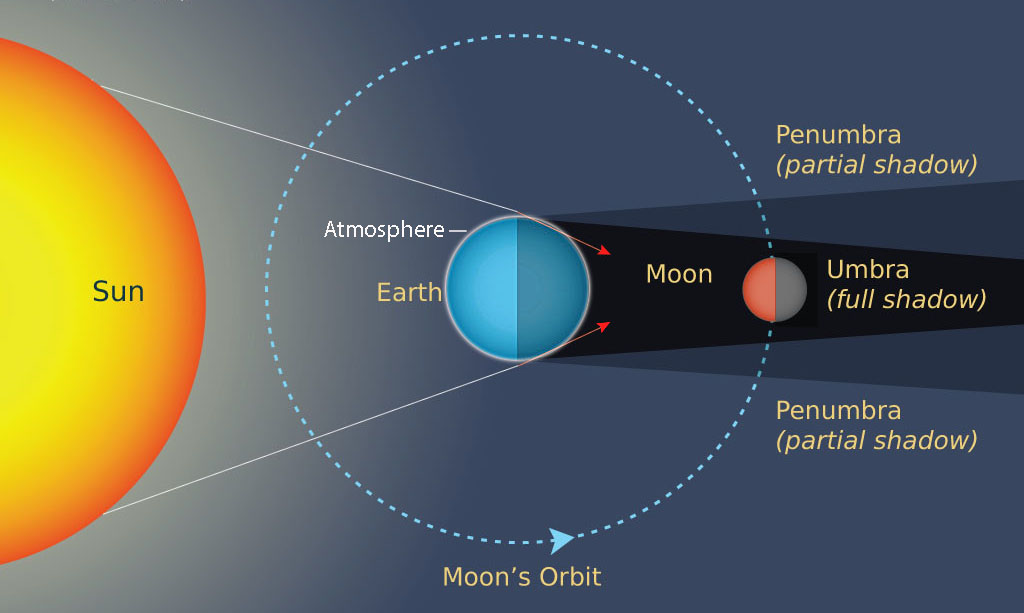- Class: Primary 6
- Term: 1st Term
- Week: 5-6
- Age: 11 years
- Duration: 40 minutes
- Subject: Basic Science and Technology
- Curriculum Theme: Basic Science
- Previous Lesson: The Earth and the Movement
- Topic: Earth Movement: The Eclipse
- Content: Solar eclipse, Lunar eclipse, The sun: Effects of interaction between the sun and the earth
Performance Objectives
By the end of the lesson, pupils should be able to:
- Cognitive Domain: Explain the earth’s rotation on its axis and its revolution around the sun, and describe solar and lunar eclipses.
- Affective Domain: Appreciate the importance of understanding natural phenomena like eclipses in our daily lives.
- Psychomotor Domain: Illustrate the earth’s orbit and the positions of the earth, moon, and sun during an eclipse.
- Social Domain: Discuss with peers how solar and lunar eclipses affect cultural and religious beliefs in different societies.
Reference Materials
The following resources were used in planning this lesson:
- 9 – Years Basic Education Curriculum
- Abuja Educational Resource Centre Scheme of work
- NAPPS National Unified Scheme of Work
- Online information from NASA Science (.gov) – Eclipses – NASA Science
- Relevant Textbooks
- Online Information From (https://science.nasa.gov/eclipses/)
- Online Information From (https://www.businessinsider.com/solar-eclipse-diagram-2017-8?r=US&IR=T)
- Online Information From (https://skyandtelescope.org/astronomy-blogs/explore-night-bob-king/a-near-miss-total-lunar-eclipse/)
Instructional Materials
The teacher will teach this lesson with the aid of:
- A globe or a model of the earth, moon, and sun
- Flashcards illustrating the different types of eclipses
- Diagrams showing the earth’s rotation and revolution
- A flashlight and a small ball to simulate eclipses
Rationale for the Lesson
Understanding the eclipse, the movement of the earth and its interaction with the sun and moon is crucial for explaining natural phenomena like eclipses. These concepts are fundamental in science and help pupils appreciate how celestial events impact our world.
Prerequisite/Previous Knowledge
Pupils already have a basic understanding of the earth’s movement and its relationship with the sun.
INSTRUCTIONAL PROCEDURES:
Learning Area: Earth Movement: The Eclipse
To deliver this lesson, the teacher will adopt the following steps:
| Content Development | Time | Teaching Method | Teaching Strategy | Teachers Activity | Pupils Activity | Learning Point |
|---|---|---|---|---|---|---|
| Step 1: Introduction (Set induction) | 5 mins | Interactive Lecture | Questioning | Introduce the lesson by asking pupils if they have ever heard of or seen an eclipse. Use a globe and a flashlight to demonstrate the basic concept. | Respond to questions and observe the demonstration. | Gain interest and relate to prior knowledge. |
| Step 2: Earth’s Rotation and Revolution | 10 mins | Demonstration and Explanation | Use of visual aids | Explain how the earth rotates on its axis and revolves around the sun. Use diagrams and models to show the movement. | Observe the demonstration, ask questions, and take notes. | Understand the earth’s movement in space and its effects. |
| Step 3: Explaining Solar and Lunar Eclipses | 10 mins | Group Work | Visual Simulation | Show the difference between solar and lunar eclipses using diagrams and models. Explain how the sun, moon, and earth align to create each type. | Participate in the group work, observe the models, and discuss among peers. | Differentiate between solar and lunar eclipses. |
| Step 4: Effects of Sun-Earth Interaction | 5 mins | Discussion | Interactive Discussion | Discuss the effects of the interaction between the sun and the earth, focusing on eclipses and how they affect life on earth. | Engage in the discussion, sharing ideas and understanding the effects of eclipses. | Grasp the broader implications of eclipses on earth. |
| Step 5: Conclusion | 5 mins | Review and Reinforcement | Recap and Emphasis | Summarize the key points of the lesson. Emphasize the importance of understanding eclipses and the movements of celestial bodies. | Listen attentively and ask final questions if any. | Reinforce the key concepts of earth movement and eclipses. |
| Step 6: Note Taking | 3 mins | Dictation | Note Preparation | Guide pupils to copy key notes into their exercise books. | Copy the notes as guided by the teacher. | Have a written reference of the lesson content. |
| Step 7: Evaluation | 2 mins | Q&A | Oral Evaluation | Ask pupils questions based on the lesson to evaluate their understanding. | Answer the questions orally. | Assess the comprehension of the topic and reinforce learning. |
Lesson Content
Earth Movement: The Eclipse
The earth rotates on its axis, which is an imaginary line passing through the North and South Poles. This rotation causes day and night. The earth also revolves around the sun in an orbit, and this journey around the sun takes one year.
Solar Eclipse
A solar eclipse happens when the moon moves between the earth and the sun. This alignment causes the moon to block the sun’s light from reaching the earth. During a solar eclipse, the day can suddenly become dark as if it’s night, even though it’s daytime. This darkness occurs because the moon is casting a shadow on the earth.

Lunar Eclipse
A lunar eclipse occurs when the earth moves between the sun and the moon. In this position, the earth blocks the sun’s light from reaching the moon. When this happens, the earth casts a shadow on the moon, causing the moon to appear darkened. Sometimes, the moon can take on a reddish color during a lunar eclipse, which is often called a “blood moon.”

Lesson Evaluation:
To evaluate the learning, the teacher asks pupils to:
- Describe the difference between the earth’s rotation and its revolution.
- Explain how a solar eclipse occurs.
- Describe what happens during a lunar eclipse.
- Discuss one effect of the interaction between the sun and the earth.
- Illustrate the positions of the sun, earth, and moon during a solar eclipse.

